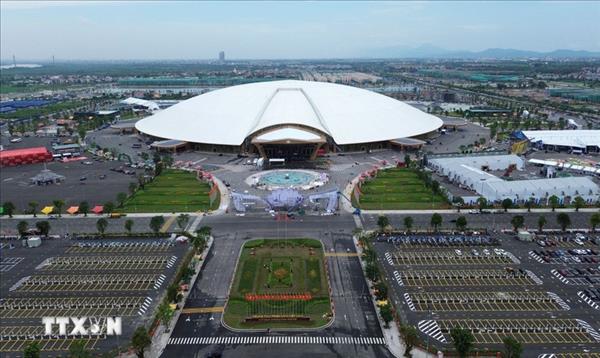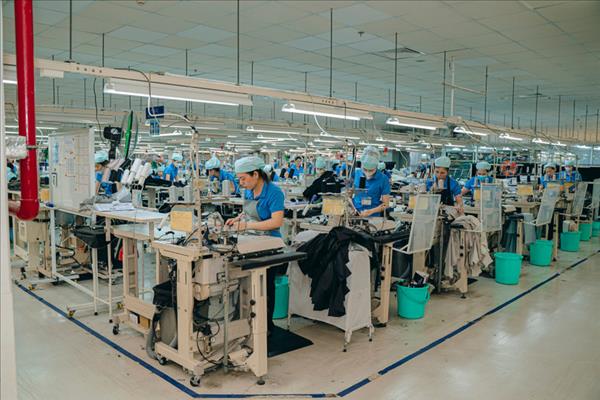Hanoi, July 22 (VNA) — Vietnam wastes at least 23 trillion VND (1 billion USD) annually on fertilisation, experts said and called for replacement of conventional fertiliser with more hi-tech products.
Le Nhu Kieu, vice head of Soil and Fertilisers Research Institute under Vietnam Academy of Agricultural Science, said that about half of the amount of nitrogen fertiliser fed to plants gets released to environment, 70-80 percent of phosphorus fertiliser amount was kept in soil and 50-60 percent of urea fertiliser amount was either evaporated or eroded.
On average, in Vietnam, plants and crops received only 35-40 percent of the fertiliser given to them, he said.
About 11 million tonnes of inorganic fertilisers are used in the country on a yearly basis, he said.
The leaked fertiliser pollutes water, impoverishes soil and makes it hard to restore the soil’s quality.
“Overuse of chemical fertilisers also threatens human and other living being’s genes, as it could cause genetic mutations, which will bring diseases for crops,” Kieu said.
Kieu told khoahocphattrien.vn that it is time to promote “hi-tech fertilisers” to increase productivity and be safer to the environment.
Compared with conventional fertilisers, the hi-tech fertilisers can help increase productivity up to 20 percent.
Using conventional nitrogen fertiliser on rice, farmers usually lose about half of the fertiliser amount. The loss can drop 20 percent when hi-tech fertilisers are used.
Mai Van Quyen, former vice head of the Institute of Agricultural Science for southern Vietnam, said that major fertiliser producers are using new technologies.
For examples, scientists are applying urea liquefying technology makes high-nutrient NPK (Nitrogen – Phosphorus – Postassium) and working to produce other substances that can be easily absorbed and released more slowly to the environment.
The slow-release fertilisers -- or controlled-release fertilisers -- are polymer-coated.
The thickness of polymer coats allows different absorption speeds.
Quyen said that some polymer-coated fertilisers can be used for five months to nine months, which helps reduce the frequency of fertilizing.
Proper fertilisation also helps avoid diseases and eutrophication – an excessive richness of nutrients in soil.
Despite of advantages, hi-tech fertilisers have not been used widely in Vietnam’s farms.
Trinh Thi Diep – a fertiliser seller in Thieu Duy Commune, Thieu Hoa district in the central province of Thanh Hoa said that her customers preferred conventional fertilisers because of lower prices and quick visible affects.
“They use nitrogen fertiliser today and see its effect in tomorrow, as the leaves growth much greener,” Diep said.
Experts say that farmers lack proper understanding about new fertilisers.
Business and relevant agencies need to boost communication to show farmers the effectiveness of hi-tech fertilisers.
Le Nhu Kieu, vice head of Soil and Fertilisers Research Institute under Vietnam Academy of Agricultural Science, said that about half of the amount of nitrogen fertiliser fed to plants gets released to environment, 70-80 percent of phosphorus fertiliser amount was kept in soil and 50-60 percent of urea fertiliser amount was either evaporated or eroded.
On average, in Vietnam, plants and crops received only 35-40 percent of the fertiliser given to them, he said.
About 11 million tonnes of inorganic fertilisers are used in the country on a yearly basis, he said.
The leaked fertiliser pollutes water, impoverishes soil and makes it hard to restore the soil’s quality.
“Overuse of chemical fertilisers also threatens human and other living being’s genes, as it could cause genetic mutations, which will bring diseases for crops,” Kieu said.
Kieu told khoahocphattrien.vn that it is time to promote “hi-tech fertilisers” to increase productivity and be safer to the environment.
Compared with conventional fertilisers, the hi-tech fertilisers can help increase productivity up to 20 percent.
Using conventional nitrogen fertiliser on rice, farmers usually lose about half of the fertiliser amount. The loss can drop 20 percent when hi-tech fertilisers are used.
Mai Van Quyen, former vice head of the Institute of Agricultural Science for southern Vietnam, said that major fertiliser producers are using new technologies.
For examples, scientists are applying urea liquefying technology makes high-nutrient NPK (Nitrogen – Phosphorus – Postassium) and working to produce other substances that can be easily absorbed and released more slowly to the environment.
The slow-release fertilisers -- or controlled-release fertilisers -- are polymer-coated.
The thickness of polymer coats allows different absorption speeds.
Quyen said that some polymer-coated fertilisers can be used for five months to nine months, which helps reduce the frequency of fertilizing.
Proper fertilisation also helps avoid diseases and eutrophication – an excessive richness of nutrients in soil.
Despite of advantages, hi-tech fertilisers have not been used widely in Vietnam’s farms.
Trinh Thi Diep – a fertiliser seller in Thieu Duy Commune, Thieu Hoa district in the central province of Thanh Hoa said that her customers preferred conventional fertilisers because of lower prices and quick visible affects.
“They use nitrogen fertiliser today and see its effect in tomorrow, as the leaves growth much greener,” Diep said.
Experts say that farmers lack proper understanding about new fertilisers.
Business and relevant agencies need to boost communication to show farmers the effectiveness of hi-tech fertilisers.
VNA/VNP

















